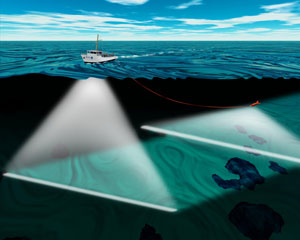Whales
Article curated by Joshua Fleming
Whales; the majestic, mysterious mammals of the ocean. This dynamic group of marine creatures includes the largest and loudest animals on Earth, but the way they live is less obvious than it appears. From haunting deep sea singing to living 200 years without disease, there are areas of whale life that scientists have more questions about than answers.

Whales can be split into two main groups; Mysticetes and Odontocetes. Though it would be fitting for the former to be named after mystery, it is instead the Latin name for baleen whales; whales that use a filter-feed system called baleen plates to consume their food. The other, Odontocetes, are the toothed whales which, as you have probably guessed, have teeth that they use for eating prey.
Sperm whales fall into the toothed whale category. Despite ‘singing’ only being observed in baleen whales, research has found that sperm whales not only have their own language, but accents too[1]. Instead of singing, these toothed whales communicate in ‘codas’. These series of clicks have only been studied in female sperm whales, because the males leave their family groups once they reach adolescence and so very little is known about them. This is not the first case of gender inequality in terms of marine research; the lack of time spent studying the female squid, for example, was highlighted recently. Studies have shown that sperm whales recognise different properties, or accents, of codas – possibly to differentiate between members of their community. The clicks produced by different groups of whales are in the same patterns, but have different tones and pitches to vary them; the same as several people speaking the same language, but coming from different cities. Furthermore, it could be used to locate family members in a crowd; if your family is stood in a room of people you would usually be able to determine their voices from those of strangers.
Another phenomenon is the use of regional dialects – whales from different regions use different codas for the same function, like different languages for the same meaning. Though why these dialects arose isn’t fully understood, the “five regular” call is one coda that appears to be universal, and is consistently used across all dialects. It is thought that the whales use this call for identification, as the pattern of five evenly spaced clicks is used worldwide and the different sound properties of each sperm whale’s coda would define it.


 2
2
Singing... for dinner or a date?
Humpback whales, a type of baleen whale, are renowned for their vocal talent; singing. What is less well known however is why they do it. It is only the males that produce a song, which is usually up to twenty minutes long and then repeated for hours. The length and structure of the songs produced each breeding season are always the same, so the long standing hypothesis has been that the males use their song as a type of mating call. Further observation of the baleen whales has revealed that they actually use the same calls while mating, hunting and foraging for food[2]. This suggests that perhaps breeding is not the sole purpose of the vocalisations. Scientists are now looking into how these recently discovered calls are used, as their function remains a mystery.
It could be suggested that perhaps the singing is beneficial while feeding as well as breeding, and research has uncovered a different sound humpbacks make that may also serve that purpose. It has already been established that humpbacks communicate at the ocean's surface to work together to catch their prey. They may also co-operate at lower depths, through “tick tock” noises, called paired bursts. Deeper in the water, communication is even more important, as it’s pitch black. There is a variety of evidence for the function of these noises and it could be that the calls serve multiple purposes[3]. The sound may help flush prey out of their sandy habitats on the seafloor, but the whales never seem to produce it when hunting alone. Hence, it could be to lure out prey when cooperating with other humpbacks to hunt them together. The technique researchers used was not accurate enough to form unquestionable conclusions; some signals were likely to be missed and so the test was biased. We won’t fully understand the purpose of this communication until better technologies and methods can be combined to explore the acoustics of the deep sea more exactly.


 2
2
Vibrating skulls

Instead, the answer may lie in bone conduction. The computer model showed sound waves vibrated down the skull and the bone was ten times more sensitive to the low frequencies than the TPC. A similar experience can occur for humans if we are underwater. Sound is muffled and warped, but despite our submerged ears being almost entirely useless we still hear sound. This is through vibrations in our skull caused by the sound waves moving through the water, putting pressure on our bones. This research has only been carried out in fin whales, so whether a similar mechanism is used by other baleen whales remains to be seen.

 2
2Cetacean ears are not open like our ears, but sealed off at the surface. They hear when low-frequency sounds in their audible range vibrate the fat on their jaws. However, many species still secrete oil in their ears, which protects their eardrums and, over the years, solidifies and builds up in distinct layers to form an earplug. These earplugs act like tree rings, allowing scientists not only to age the whale, but also to reconstruct their chemical and psychological lifetime profile to within a 6 month resolution.
In the wax layers, scientists have found the stress hormone cortisol and growth-inducing sex hormone testosterone, which are not persistent in the rest of the body and so leave no trace of their history. In one whale, scientists saw testosterone peak at 10 years (the height of puberty), and at the same time cortisol increased. Over its entire lifetime, cortisol gradually doubled.
They also found chemical traces such as mercury, DDT and flame retardants, which cause developmental disorders and thyroid issues in these animals. Many persistent organic pollutants (POPs) are fat soluble and so build up in bodily fats, but the earplug now allows scientists to track when the whale was exposed to them. Interestingly, 20% of the anthropogenic chemical exposure suffered by one whale occurred in the first year of its life, suggesting they were transferred from the mother via gestation and milk. DDT, banned 30 years before the whale’s birth, was still a potent contaminant. Scientists are now exploring museum earplugs from the 1950s to map chemical changes to the oceans over time.


Selective hearing
It appears whales might also be able to change their sensitivity to sound. Producing the loudest sounds of any animal, whales need to protect their ears from the clicks they emit for echolocation and from external sounds, increasingly from manmade sources[5]. A team of scientists played a short ‘warning’ sound then a loud sound to a false killer whale – a member of the dolphin family that scientists really don’t know much about. As they did so, they studied its brainwaves. Results indicated that the whale quickly learnt the loud sound followed the warning sounds, and reduced its hearing sensitivity accordingly. How the whale physically did this is unknown, but we know it occurred from the variation in brain wave sizes.
Louder sounds make big brain waves, quieter sounds make smaller waves
They may use similar mechanisms to other mammals that also use echolocation, such as bats. Bats reduce their sensitivity to sound by contracting muscles in their ears as a barrier, but this has not yet been found in whales.

 2
2Unique echolocation signals collected in the Southern Ocean near Antarctica may belong to a new kind of beaked whale. These whales, whilst numerous, live at depth and little is known about their behaviour or diversity. In 2014, two Cuvier beaked whales broke the mammalian dive depth and duration records, travelling 1.8 miles down and not resurfacing for 2 hours, 17 minutes and 30 seconds[13].


Is sonar dangerous to whales?


Hormonal hints
Another area of unknowns is the life cycle of whales; their reproduction and longevity are currently open questions. We don’t even know how often whales give birth, because the giant mammals are very difficult to catch and monitor in their natural habitats. Whale reproduction is being studied through a new technique for extracting hormones from the whales and studying them to decipher clues about their life cycles[6]. The extraction technique wasn’t deemed viable for whales until 2014 because the hormones are taken from tissue made of keratin, which whales were thought to lack as they have no visible hair.
But scientists then realised that maybe they do; their baleen plates. The plates used to filter food are very similar to hair and the hormones taken from them matched expectations. The whales’ reproductive cycles can be discerned because of the type of hormone taken. Progesterone is present at high levels during pregnancy and so can be monitored to work out when the last pregnancy was or whether a whale is currently pregnant. Reproductive cycles are crucial sources of information on whale populations, but researchers don’t know what they should expect to see, and so cannot form reliable conclusions. For now, the technique is not fully validated and requires more work, but offers a potential solution to answering questions on birth frequency, mating seasons and gestation periods.

Evolutionary wonder
Whales are really, really big, and blue whales believed to be the biggest animals ever to have lived on the planet. We don’t know why they’re so big nor why, between 4 and 4.5 million years ago, they started growing from elephant-size to the proportions they have today. However, some scientists think this may have been because during ice ages there was loads of krill to feed on in summer, but none in winter, and large travel times between krill patches, meaning that larger whales that could store more energy had an advantage over smaller ones. Why they started off big or have remained so, however, is not explained by this theory.



Bowhead whales are one of the largest species of whales. They can also live more than two hundred years, possibly the longest of any mammal. But scientists aren’t certain of how they manage it, or what determines longevity in a lot of different creatures. In an attempt to gather more information, researchers have been studying the genome of long-living whales[7]. Bowheads' longevity is especially impressive because they rarely suffer age-related diseases. Indeed, baleen whales have more than one thousand times as many cells than us, so should be more prone to cancers, rather than more resistant. Research is now being focussed on introducing bowhead genes to mice to study their significance in longevity.


 2
2
A discovery in 2015 of a missing gene has led to scientists wondering exactly how toothed whales haven't been wiped out by disease. Mx genes are responsible for producing proteins to fight off viral infections. A team from the Stanford University School of Medicine were sequencing the genomes of 60 mammals for research into new viral proteins in primates[8]. Amongst their results they discovered various mutations in the Mx genes in toothed whales that prevented or interfered with protein synthesis. All of the other mammals had normal healthy Mx genes, including the baleen whale, a species that shares a common ancestor with the toothed whales. How and why has this happened to the toothed whales, and them alone, is not something we know. The common ancestor may have been exposed to a virus that forced the loss of Mx gene function in order to survive. This is supported by the discovery that viruses sometimes exploit the Mx gene function for individual gain. We don't know how toothed whale immune systems work, but compensatory mutations may have evolved from this loss of the Mx gene function in the common ancestor.

 3
3Scientists have long believed that whales lost their legs before the early split in the whale family tree into toothed and filter feeders, partly because all modern species have no evidence of hind limbs, and partly because vestigial limbs have been seen in fossils dating to before the split. However, the discovery of a new moustached toothed whale, Mystacodon selenensis, in Peru with vestigial hind limbs. This suggests the two branches of whale family may have lost their legs independently[9].


Nerves of steel… or not
Yet another bizarre finding that produced new questions about whales is stretchy nerves[10]. Researchers were trying to solve the conundrum of how they transform their mouths to take in maximal amounts of fish, and found nerve cells that unfold to elongate. The speed at which it unfolds and how it is folded in the first place are areas that researchers are other fascinating questions.

Ecosystem impacts
Scientists are beginning to uncover just how important the whales are to the animals and ecosystems around them. Estimates of whale population declines vary down to 10% of what numbers once were[11]. The good news is that they are starting to recover and, with technological advances, their ecological effects are becoming recognised. Among their contributions to ocean life is their function as “whale pumps”, where they support plankton growth through their feeding habits. The name effectively describes its function; the whales consume prey below the surface and then excrete fumes that the minuscule marine organisms on the surface use for growth. Furthermore, whales considerably impact the global carbon footprint: throughout their lives they absorb carbon, then when they die their carcasses become stores. In the 20th century alone, more than 100 million tonnes of carbon was released into the atmosphere that would have been absorbed by whales in their pre-industrial numbers.

![Trophic levels CK-12 [CC BY-NC 3.0]](/img/sci/Trophiclevels.jpg)
Learn more about /keystone species.


 4
4Scientists think that whales may therefore be able to create fast animal-driven changes to physical geography. The scope and knock-on effects are being investigated.


 2
2As the study of whales progresses and more is discovered about their complicated, fascinating behaviour and biology, yet more new research objectives are created. Their underwater voices may one day be understood, but whilst scientists decode the sounds they have found, they find more.
This article was written by the Things We Don’t Know editorial team, with contributions from Cait Percy, Rowena Fletcher-Wood, and Joshua Fleming.
This article was first published on 2017-07-17 and was last updated on 2020-07-30.
References
why don’t all references have links?
[1] Antunes, R., et al., (2011) Individually distinctive acoustic features in sperm whale codas Animal Behaviour 81.4:723-730 doi: 10.1016/j.anbehav.2010.12.019.
[2] Stimpert, A., et al., (2012) Humpback Whale Song And Foraging Behavior On An Antarctic Feeding Ground Public Library of Science ONE 7.12. doi: 10.1371/journal.pone.0051214.
[3] Parks, S., et al., (2014) Evidence For Acoustic Communication Among Bottom Foraging Humpback Whales Nature 4.7508. doi: 10.1038/srep07508.
[4] Cranford, T., and Krysl, P., (2015) Fin Whale Sound Reception Mechanisms: Skull Vibration Enables Low-Frequency Hearing Public Library of Science ONE 10.1. doi: 10.1371/journal.pone.0116222.
[5] Nachtigall, P, and Supin, A., (2013) A False Killer Whale Reduces Its Hearing Sensitivity When A Loud Sound Is Preceded By A Warning Journal of Experimental Biology 216.16:3062-3070. doi: 10.1242/jeb.085068.
[6] Hunt, E., et al., (2014) Baleen Hormones: A Novel Tool For Retrospective Assessment Of Stress And Reproduction In Bowhead Whales (Balaena Mysticetus) Conservation Physiology 2.1. doi: 10.1093/conphys/cou030.
[7] Keane, M., et al., (2015) Insights Into The Evolution Of Longevity From The Bowhead Whale Genome Cell Reports 10 (1):112-122. doi: 10.1016/j.celrep.2014.12.008.
[8] Braun, B., et al., (2015) Mx1 and Mx2 key antiviral proteins are surprisingly lost in toothed whales Proceedings of the National Academy of Sciences 112.26:8036-8040. doi: 10.1073/pnas.1501844112.
[9] Lambert, Olivier, et al. Earliest mysticete from the Late Eocene of Peru sheds new light on the origin of baleen whales. Current Biology 27.10 (2017): 1535-1541.
[10] Vogl, A., et al., (2015) Stretchy Nerves Are An Essential Component Of The Extreme Feeding Mechanism Of Rorqual Whales Current Biology 25.9:360-361. doi: 10.1016/j.cub.2015.03.007.
[11] Iwc. int. 2015. 'Population Estimates'.
[12] Joint Interim Report Bahamas Marine Mammal Stranding Event of 15-16 March 2000. National Marine Fisheries Service.
[13] Schorr, G,S., et al., (2014) First Long-Term Behavioral Records from Cuvier’s Beaked Whales (Ziphius cavirostris) Reveal Record-Breaking Dives PLoS ONE 9(3):e92633. doi: 10.1371/journal.pone.0092633.
Blog posts about whales


Recent whales News
Get customised news updates on your homepage by subscribing to articles













